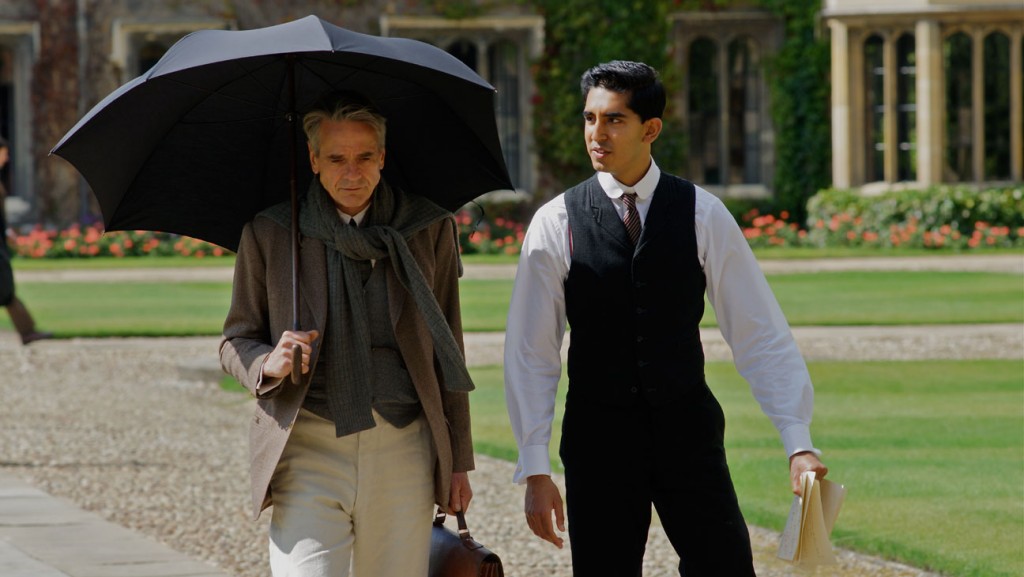The improbable story of Srinivasa Ramanujan, the autodidact genius who died tragically young, is one of the most inspirational in all of mathematics.
It will reach the big screen when The Man Who Knew Infinity is shown in cinemas at the end of this week, as the Science Museum prepares a bold new gallery on mathematics in London, designed by Zaha Hadid, along with exhibits next year about science and technology in the Indian subcontinent.
Ramanujan (born 22 December 1887) was raised in Southern India and, as a result of his profound intuition about mathematical patterns, the then clerk at the Accountant-General’s office at the Madras Port Trust Office was invited to Trinity College, Cambridge.
There the eminent British mathematician Godfrey Harold (G. H.) Hardy and his collaborator John E. Littlewood, recognised the raw talent of Ramanujan’s work, which he had recorded in notebooks and tried to capture in a letter to Hardy.
The movie depicts the clash of approaches between methodical Hardy, who demanded proofs based on close reasoning, and the intuitive approach of Ramanujan, who claimed his ideas were dispensed by his family deity.
However, Ramanujan went on to become the first Indian Fellow both of Trinity and of the Royal Society, the world’s oldest learned society, which hosted a screening earlier this week of the film, directed by Matthew Brown.
Hardy once quoted Littlewood as saying that ‘Every positive integer was one of [Ramanujan’s] personal friends.’
The film shows perhaps the most famous anecdote about Ramanujan’s visceral grasp of mathematics. Hardy took a cab to visit Ramanujan and had remarked that the number of his cab, 1,729, was uninteresting. Ramanujan replied that, to the contrary, it was the smallest number expressible as a sum of two cubes in two distinct ways.
Today, it is often called the taxi-cab number (for example, in the Science Museum’s event on maths and The Simpsons).
Ramanujan had suffered episodes of illness throughout his life and the rigours of his lifestyle in England during the First World War, combined with the strict vegetarianism of his Brahmin caste, eventually led to a decline in his health. In 1917 Ramanujan was hospitalised in London.
He was thought to have tuberculosis, and had made a failed suicide attempt, when he threw himself under a train. After around five years in Cambridge, Ramanujan returned to Madras in 1919, a sick man, and died shortly after, on 26 April 1920.
‘Every child who grows up in India knows Ramanujan, in the same way that every British child knows about Darwin or Newton,’ said the Indian-born president of the Royal Society, Sir Venki Ramakrishnan, a Nobel prize winning molecular biologist.
‘I realised with some pleasure that I would be the president on the centenary of his lecture to the Royal Society, and I thought something ought to be done about it.’
Through Trinity College, Sir Venki’s own college, he was put in touch with Ken Ono, the Asa Griggs Candler Professor of Mathematics at Emory University in Atlanta, Georgia, and a Ramanujan scholar, who had consulted on the movie (Ono told the Society the film was a ‘passion project’)
Sir Venki said he was struck by what he called ‘a rather romantic story’, the fact that Ramanujan had connected with Hardy at all. ‘There were people who transcended the prejudices of their time and reached out,’ said Sir Venki. ‘It is a lesson to all of us. We don’t know where genius can spring from. We should keep our minds and our hearts open.’
Nobel prize winning astronomer Subrahmanyan Chandrasekhar has also described how Ramanujan’s success had boosted the confidence of the founders of modern India including Jawaharlal Nehru, who became the first Prime Minister in 1947.
In 2012 on the 125th anniversary of Ramanujan’s birth, the Notices of the American Mathematical Society published articles on his work. Most remarkable, the studies he conducted after returning to India, contained in what is now known as the ’Lost Notebook’, have only recently been interpreted. Ramanujan’s ‘mock’ theta functions are now used in the study of black holes.
Ono remarked: ‘we are still finding new applications all over mathematics, all over science that we wouldn’t really have imagined ten years ago; the legend of Ramanujan is mysterious at every level.’

In the movie, Hardy is played by Jeremy Irons and Littlewood by Toby Jones. Stephen Fry is Sir Francis Spring, who was an early advocate of Ramanujan in India, and Dev Patel is Ramanujan.
Patel told the Royal Society that the film was a ‘labour of love… over 10 years in the making. It is a difficult sell. There is no action or adventures. It is an intellectual piece about two men coming together for their art.’
‘Ramanujan was very religious and thought mathematics was like painting without colours; he believed every equation was an expression of God,’ said Patel. ‘Hardy, on the other hand, was an atheist and believed in the practical way of doing proofs to explain theorems and this is what he tried to instil in Ramanujan.
When a film does not rely on CGI or special effects, it’s performance driven and I thought a story about two humans with drastically different ideals would be an amazing journey to go on. It turned out to be just that.’
Roger Highfield is Director of External Affairs at the Science Museum and attended a Royal Society screening of The Man Who Knew Infinity.